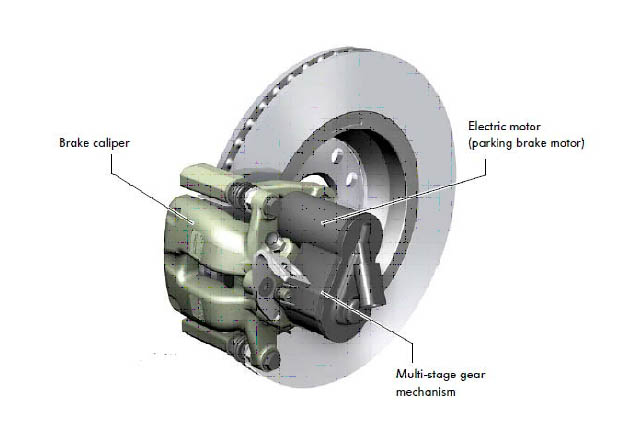Reset Volvo P3 EPB by Autel EBS301 without VIDA

Brake bias has moved ever rearward in the past decade. As time goes on, I’ve noticed that the newer my cars get, the quicker the rear pads wear in comparison to the fronts. Front pads are lasting 50-60K, while the rear set can barely reach 30K.
In theory, replacing a set of rear pads is a cinch. For Volvo drivers with an electronic parking brake equipped vehicle, there is another step involved that may seem like a money grab for the dealership. Fret not – there is another way.
VIDA is not required
Electronic parking brakes have eliminated the use of long, sloppy cables that traditional lever parking brakes have utilized for years. While this eliminates complexity in one area, it adds it in another. Most vehicles with EPB have small motors attached to the rear calipers. These are used to wind the caliper’s pistons in and out, simulating a parking brake being pulled.

With the motor removed, the input shaft for the piston retraction is visible. This allows the piston to be retracted manually using a T20 torx bit. Turning this shaft clockwise by hand will slowly retract it in, allowing the caliper to be removed for pad, rotor, or even caliper replacement.
Electronic alternative
VIDA is Volvo’s tool to interface with the many systems on P2 and P3 vehicles. It allows a technician to manipulate most every actuator, and read the data from all of the sensors easily. For the home mechanic, it is a cost prohibitive tool that is limited by the inability to license most of the software downloads and upgrades.
To sidestep VIDA requires an aftermarket tool. Many exist, and tools like the Autel EBS301 Electric Brake Service Tool are made specifically to manipulate electronic parking brake systems from European manufacturers. These are of Chinese descent, and utilize reverse engineering to crack the codes of Volvo, Mercedes, and BMW vehicles.
Buying a dedicated electronic parking brake tool is a small investment that will ensure easy brake jobs for years to come. For the infrequent DIY’er, simply removing the EPB motor and retracting the piston manually is a great way to go.
